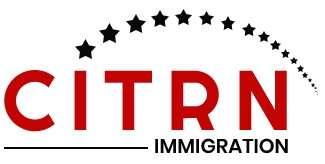
About Canada refugee system
About Canada refugee system
Canada was known to be one of the forerunners in worldwide efforts to protect and resettle refugees and immigrants from persecution, violence, or human rights abuses. The intent to carry on with the humanitarianistic efforts has compelled the country to build a well-established system that gives safety and a new beginning to those in need.
There are two tracks in the Canadian refugee system: the Refugee and Humanitarian Resettlement Program, for those outside Canada, and the Inland Refugee Protection Program, for those making claims from within Canada. This blog explains how the Canadian refugee system works, who is eligible for protection, and what it's like for claimants through the process.
Who Is Considered a Refugee in Canada?
A refugee, according to definition, is a person who has fled his country of origin due to the fear of persecution, war, or grave human rights violation. Two major categories are there through which Canada accepts refugees:
- Convention Refugees : Those who meet the definition contained in the 1951 United Nations Convention Relating to the Status of Refugees. They have a well-founded fear of being persecuted because of race, religion, nationality, political opinion, or membership in a particular social group.
- Protected Persons: Individuals already in Canada whom it would not be reasonable to return to their country of origin due to a risk of torture, the possibility of incurring a life-threatening or cruel or unusual treatment.
In each case, Canada's immigration authorities consider the individual's claim to determine if they qualify for protection and can remain in the country.
Refugee and Humanitarian Resettlement Program
Canada's Refugee and Humanitarian Resettlement Program is an initiative to help those refugees who, owing to the threat of persecution or other serious dangers, cannot return to their countries. It collaborates with the international bodies like the United Nations High Commissioner for Refugees (UNHCR) in identifying and resetting such refugees.
Three major streams are under the program:
Government-Assisted Refugees (GARs )
These are refugees referred to the Canadian government by the UNHCR or another designated organization. On arrival, GARs receive support from the federal government, including financial aid, settlement services, and language training to help them settle in the Canadian society.
Privately Sponsored Refugees (PSRs)
This stream enables private organizations or groups of Canadian citizens and permanent residents to sponsor refugees. In this regard, the support provided for a refugee by private sponsors is considered as assistance needed in the first year of their resettlement in Canada. This includes shelter, food, and other basic needs. Private sponsorship is very important in raising the level of refugee admissions in Canada because it adds to the number of refugees that the government can reset annually.
Mixed Visa Office-Referred Program (BVOR)
The BVOR program is a joint effort made between the government of Canada and private sponsors. Through this program, refugees referred under this stream are offered partial support by the government and the private sponsors. With partial support, it becomes easier to take in many more refugees
Inland Refugee Protection Program
The Inland Refugee Protection Program provides protection, as well. An individual may arrive on the shores of Canada and claim asylum and they are already inland. They had come to Canada as a tourist, temporary resident, or on some other visa. This is how it works:
a) Making a Refugee Claim
A refugee can submit a claim at a Canadian port of entry including an airport or a crossing point into Canada, or inside Canada at one of the offices found below. Throughout the claim, the person has to demonstrate they meet the criteria to be named a refugee or a person in need of protection.
b) Pre-screening process
In this case, whether the application is admissible or not will depend on the evaluation made by Immigration, Refugees and Citizenship Canada (IRCC) or the Canada Border Services Agency (CBSA). Some reasons may, however not make an application admissible, for example, denied previous applications, or if the applicant has a potential of being a security risk.
c) Hearing Before the Immigration and Refugee Board (IRB)
Once the claim is deemed admissible, the claimant then will be brought before the Immigration and Refugee Board (IRB), which will determine their status as a refugee. The IRB is an independent tribunal having the mandate under the Immigration Act to determine if a claimant has a likelihood of facing a danger of persecution if returned to his or her country of nationality. The applicant will be asked questions and provided with an opportunity to demonstrate evidence in support of his or her fear of returning to his or her country of origin during this process.
d) Decision
After the hearing, the IRB will come to a decision on whether the person is a Convention Refugee or a person in need of protection. If their claim is approved, they qualify to apply for permanent residency. In the event that the claim is refused, they would be removed from Canada, although they might appeal the ruling in some events.
Safe Third Country Agreement (STCA)
An important aspect of Canada’s refugee system is the Safe Third Country Agreement (STCA) with the United States. Under this agreement, refugee claimants must request protection in the first safe country they arrive in, meaning that those who enter Canada from the U.S. via land border crossings may not be eligible to make a refugee claim in Canada, unless they meet certain exceptions.
Exceptions to the STCA include:
- Relatives in Canada.
- Separated Children/Minors
- Having the proper Canadian travel documents.
Refugee Appeals and Legal Aid
If a refugee claim is denied, individuals have the option to appeal the decision to the Refugee Appeal Division (RAD), part of the IRB. They may also apply for a judicial review in Canada’s Federal Court. Some provinces provide legal aid to refugees, offering assistance with representation, document preparation, and navigating the appeals process.
Canada’s Commitment to Refugees
Canada has a long-standing commitment to protecting refugees and upholding human rights. In addition to resettling thousands of refugees annually, the country has implemented initiatives such as the Global Refugee Sponsorship Initiative (GRSI), which encourages other nations to adopt similar private sponsorship models.
Canada is also a signatory to the 1951 Refugee Convention and the 1967 Protocol, which emphasize the responsibility of countries to protect individuals who are unable or unwilling to return to their home countries due to persecution or violence.


Looking for safety and a fresh start in Canada?
Explore refugee sponsorship programs and begin your journey to a new life.
Contact us today for support and guidance.

